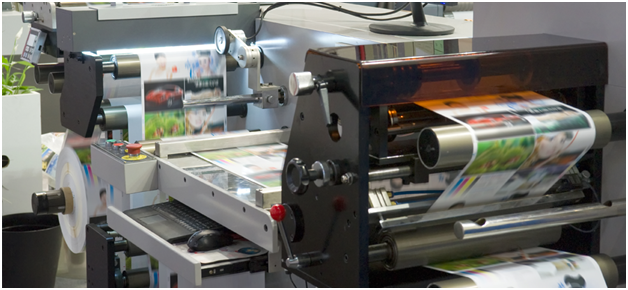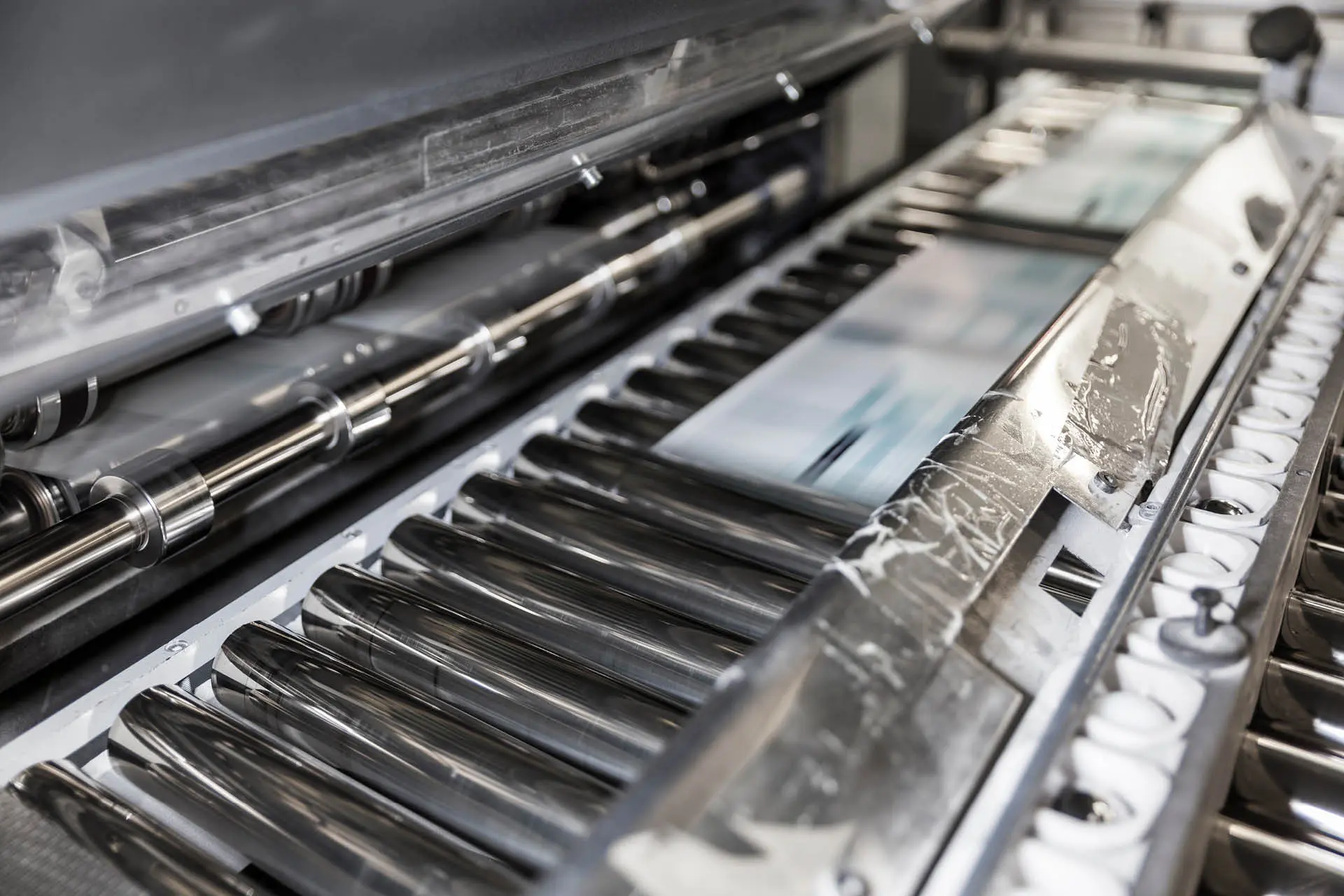The Crucial Guide to Understanding Litho Printing and Its Applications
Litho printing stands as a substantial method in the printing market, rooted in the principles of oil and water repulsion. This strategy not only provides high-quality photos however additionally accommodates various industrial demands. Its applications vary from marketing materials to packaging, showcasing its adaptability. As the sector adapts to brand-new modern technologies, the evolution of litho printing raises concerns concerning its future and importance in an electronic landscape. What exists in advance for this sustaining method?

What Is Litho Printing?
Litho printing, an extensively used printing strategy, relies upon the principle of oil and water repulsion. This method utilizes a flat printing surface, usually a steel plate, which is dealt with to assure that the picture locations are receptive to oil-based inks while the non-image areas repel them. The procedure starts with the development of a picture on the plate, usually through drawing or photo methods. As soon as the picture is prepared, home plate is dampened with water, adhered to by the application of ink. The ink adheres only to the picture areas, allowing for exact reproduction of graphics and message. Litho printing is favored for its ability to generate top notch prints with great information and vivid shades. It is generally made use of in commercial applications, consisting of papers, magazines, and product packaging, showcasing its versatility and effectiveness in fulfilling the needs of modern-day printing.
The History of Lithography
Lithography is a modern printing staple, its beginnings map back to the late 18th century when German playwright Alois Senefelder created the technique in 1796. Initially developed as an approach for duplicating texts and images, lithography made use of a flat stone surface to create prints through a chemical process. Senefelder's advancement permitted for better adaptability and artistic expression compared to previous printing methods.By the 19th century, lithography obtained prevalent approval, coming to be a preferred selection amongst artists and authors. It enabled the automation of images, maps, and posters, especially affecting the printing market. The strategy further advanced with the intro of lithographic presses, boosting effectiveness and quality.As the industrial transformation proceeded, lithography adapted to fulfill the demands of business printing, leading the method for modern applications. Today, it continues to be a necessary technique in different sectors, consisting of publishing, product packaging, and art reproduction.
Just How Litho Printing Works
An essential attribute of litho printing is its dependence on the principle of oil and water repulsion - litho printing. In this procedure, photos are transferred from a level surface area, typically a steel or polymer plate, to paper. Home plate is treated to ensure that the areas meant for printing attract ink, while the non-image areas repel it as a result of their affinity for water. The printing starts by dampening home plate with water, which sticks to the non-image locations. Subsequently, an oil-based ink is applied, sticking only to the desired image areas.When the plate enters into contact with the substratum, the ink is transferred, developing a print. The litho printing procedure is qualified of producing high-quality images with great detail. It is commonly made use of for automation as a result of its performance and consistency, making it a recommended method for commercial printing applications
Benefits of Litho Printing
One noteworthy benefit of litho printing is its capability to generate top notch pictures continually, making it an excellent selection for business projects. This printing method uses a flat printing plate, guaranteeing also ink circulation and sharp details. Litho printing is likewise renowned for its color precision, enabling vibrant and true-to-life recreations, which is vital for branding materials.Moreover, it sustains a wide range of substratums, including paper, cardboard, and even particular plastics, improving its versatility. The process is cost-efficient for large runs, as economic climates of scale minimize per-unit costs. Furthermore, litho printing has a quick turnaround time, permitting for reliable manufacturing schedules.Its sturdiness also means that printed materials resist fading, making certain that the last item keeps its visual allure over time. Generally, these advantages make litho printing a recommended selection across numerous sectors, adding to its long-lasting popularity.
Applications of Litho Printing in Company
As companies progressively look for reliable and high-grade printing services, litho printing becomes an essential player in numerous applications. This method is particularly preferred for generating advertising and marketing materials such as brochures, leaflets, and catalogs, thanks to its ability to supply lively shades and sharp photos. Furthermore, litho printing is frequently used for packaging options, enabling business to produce eye-catching labels and boxes that boost item appeal.In the field of business identification, litho printing contributes in producing professional stationery, calling card, and advertising goods, which assist strengthen brand name acknowledgment. Furthermore, it is extensively made use of in the publishing market for published products such as publications and publications, where regular high quality is critical. Overall, litho printing's versatility and performance make it a crucial device for businesses intending to interact efficiently and develop a solid market visibility.
Artistic Uses of Litho Printing
Litho printing functions as a functional medium in the domain of printmaking, offering artists an one-of-a-kind method to reveal their creativity. This strategy enables a variety of creative applications, from standard prints to modern interpretations. By checking out the subtleties of litho printing, musicians can harness its distinct high qualities to improve their work.

Printmaking Methods Overview
The virtuosity of printmaking includes a diverse variety of techniques, with litho printing standing apart for its special strategy to photo production. This approach relies on the principle of oil and water repulsion, enabling artists to attract straight onto a limestone or steel plate with an oily medium. When prepared, the plate is dampened and inked, transferring the picture onto paper through stress. Litho printing is commemorated for its capability to produce great information and abundant tonal variants, making it a preferred selection amongst artists. Furthermore, the procedure is functional, accommodating both typical methods and modern adjustments. This versatility enables litho printing to bridge various artistic designs, enriching the printmaking landscape with its distinct attributes and capabilities.
Unique Artistic Applications
Discovering the distinct imaginative applications of litho printing reveals its amazing adaptability in various imaginative fields. Musicians use litho printing to create elaborate designs and appearances, enabling meaningful and in-depth jobs. The procedure helps with the recreation of vivid shades, making it excellent for illustrations and great art prints. Lots of modern artists embrace lithography for its capability to integrate typical strategies with modern-day concepts, resulting in innovative artwork. In addition, litho printing is commonly employed in the manufacturing of restricted edition prints, enhancing their worth and charm. The responsive high quality of litho prints includes a distinctive measurement, drawing in collection agencies and art enthusiasts alike. Overall, litho printing continues to be a significant medium for imaginative expression, bridging traditional approaches with modern creative thinking.
The Future of Litho Printing in a Digital Globe
As the printing industry progresses, litho printing encounters the challenge of integrating electronic technologies to continue to be relevant. Strategies concentrated on digital combination, along with trends in sustainability and development, will certainly form its future - litho printing. Recognizing these characteristics is crucial for industry stakeholders seeking to adapt to a swiftly altering landscape
Digital Combination Approaches
A growing number of litho printing companies are welcoming digital assimilation methods to stay affordable in a progressively digital landscape. By integrating digital process, these companies can improve procedures and improve efficiency. This assimilation enables real-time information administration and boosted communication in between departments, decreasing turn-around times substantially. In addition, digital devices make it possible for far better personalization and personalization of published products, accommodating particular consumer demands. click to read Business are additionally adopting hybrid printing solutions that integrate traditional litho methods with digital technologies, using convenience in manufacturing. Leveraging data analytics assists in recognizing market patterns and client preferences, allowing businesses to make informed choices. Overall, digital integration is becoming vital for litho printing companies aiming to innovate and reply to progressing market needs.
Sustainability and Advancement Fads

Often Asked Questions
What Products Are Frequently Made Use Of in Litho Printing?
The materials commonly utilized in litho printing consist of light weight aluminum plates, ink, water, and paper. Each element plays a necessary function in the printing procedure, making certain top notch picture reproduction and effective transfer of ink onto the substrate.
How Does Litho Printing Compare to Digital Printing?
Litho printing provides superior color consistency and top quality for big runs, while electronic printing masters short runs and customization. Each technique has unique benefits, accommodating different needs based upon production range and cost-efficiency.
What Is the Typical Turn-around Time for Litho Printing Projects?
The normal turn-around time for litho printing jobs varies, usually varying from a few days to several weeks. Variables affecting this duration include task complexity, amount, and needed completing processes, impacting total production schedules.
Can Litho Printing Accommodate Custom Sizes and Formats?
Litho printing can without a doubt fit customized dimensions and styles, permitting for versatility in layout. see here now This flexibility enables customers to achieve special print results customized to their details requirements, enhancing the overall effectiveness of their tasks.
What Are the Ecological Impacts of Litho Printing?
The environmental impacts of litho printing consist of resource usage, chemical usage, and waste generation. Innovations in sustainable practices and environment-friendly products are gradually minimizing these adverse results, advertising a more ecologically responsible strategy to printing.
Comments on “How litho printing Contributes to Sustainable Business Practices”